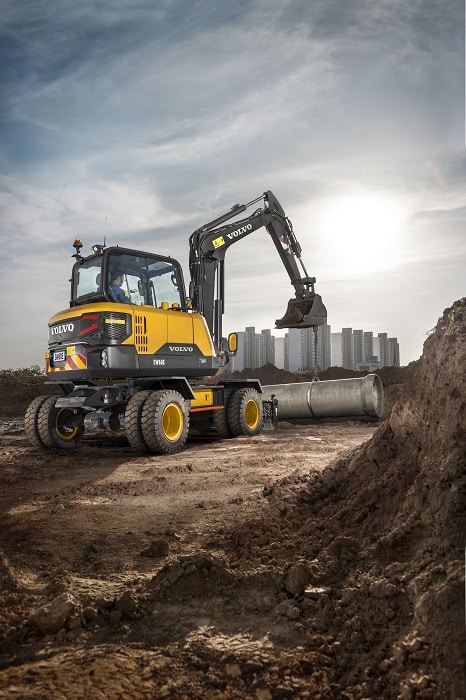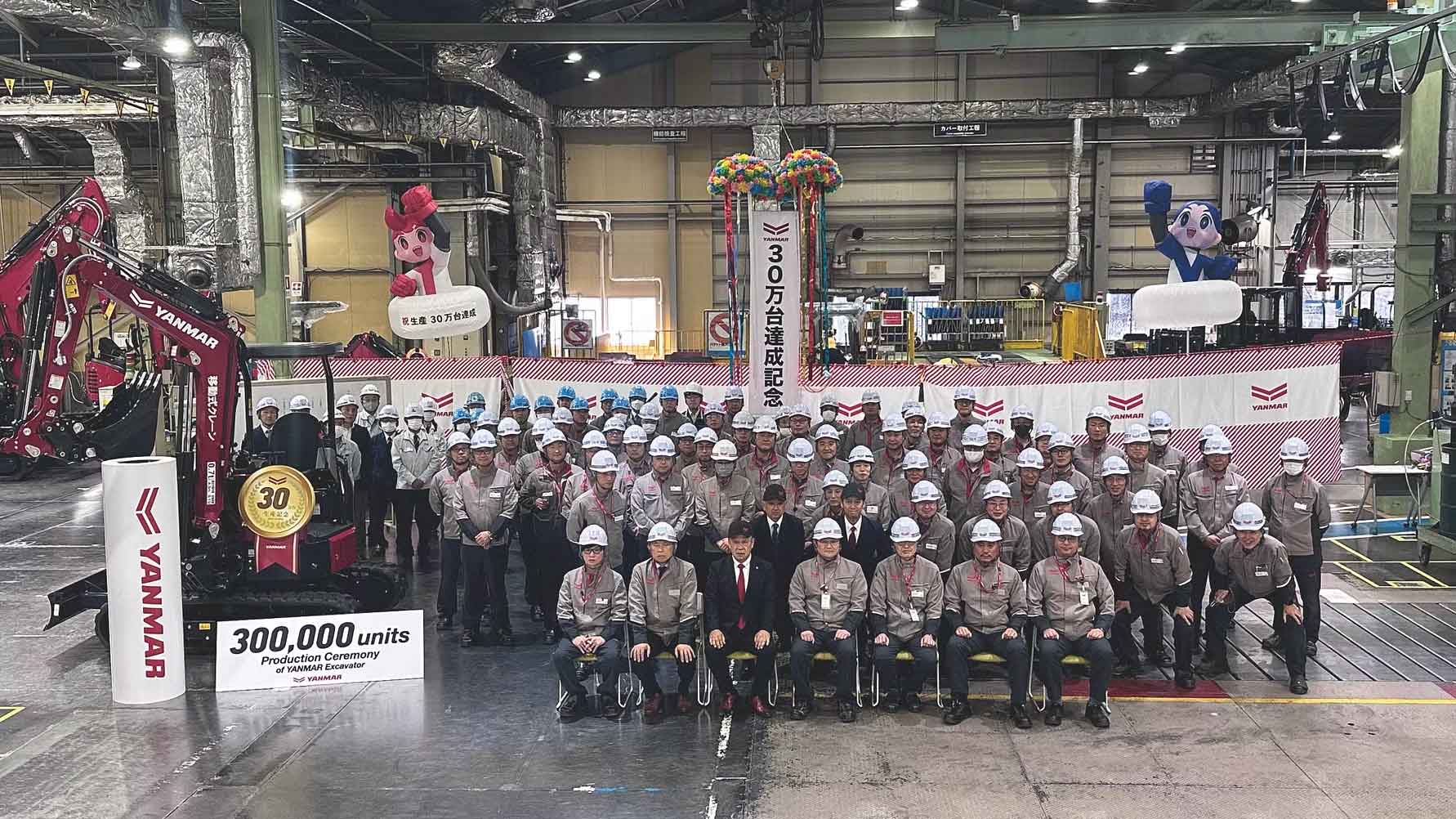Compact Wheeled Excavators vs. Backhoes: Four Factors to Consider

Let’s talk about compact wheeled excavators versus backhoes. Many backhoe customers opt for that machine because of its mobility and how it serves as two machines in one (an excavator and a loader) and because the type of work they typically do doesn’t justify getting a wheeled excavator. In many of those cases, they would actually benefit from a compact wheeled excavator.
Compact wheeled excavators stack up well against backhoes when it comes to features and specs. Plus, I’ve found that most fleets primarily use the excavator end of the backhoe, and seldom use it as a loader.
So how do you decide between a compact wheeled excavator or backhoe for your operation? Here are a few considerations that I share with customers when evaluating their options.
1. Engine power and digging forces
Don’t be deceived by the higher horsepower on backhoes. The horsepower number is representative of the bucket up front that requires horsepower and does not reflect the digging power on the excavator end. Also, consider your maximum digging depths needed. Though compact wheeled excavators may have less digging depth than backhoes, they’re still a fit for most applications.
2. Working range and repositioning
If you are working in tight spaces, you may find it more difficult to maneuver a backhoe that only has a 180-degree working radius compared to compact wheeled excavators that have 360 degrees. The added flexibility allows more options to dump material and load a truck. Or when trenching, the operator needs to think about repositioning a backhoe instead of simply pushing the travel pedals and continuing to dig.
The compact size of the machine allows it to fit in places where backhoes can’t. And thanks to a 360-degree working radius, you rarely need to reposition a wheeled excavator to finish the job. Add to that an offset boom, and you can really get into some tight areas. Plus, working with a machine that has a 70-degree offset allows the operator an unrestricted view to the bucket when trying to locate sensitive pipes and cables.
3. Proven productivity and efficiency
We tested the EW60E against a competitively sized backhoe. The first test involved digging a trench 60 ft long and 3 ft deep. The EW60E did the work 38 percent faster and used four times less fuel than the backhoe. The second test dug a pool 9×9 ft, 3 ft deep. The EW60 finished in half the time and burned a quarter of the fuel compared with the backhoe. I think those results speak for themselves.
4. Total cost of ownership
A final consideration is the total cost of ownership. Here are factors to keep in mind:
- Backhoes usually have a higher purchase price.
- Backhoe tires are more expensive.
- Backhoes consume more fuel due to a larger engine and hydraulic system.
- Features like auto idle and engine auto shut down help reduce fuel consumption and noise levels.
- Tier 4 final backhoes above 74 hp require a selective catalytic reduction (SCR) system and regular DEF refueling. In the case of the EW60E, the 64-hp Tier 4 Final engine has DPF with full automatic regen and no DEF, which saves money and removes worries about having to store the DEF.
Which is the right machine for you?
While the excavator in any form will never completely take over from the backhoe workhorse, the compact wheeled excavator is a good cost-efficient alternative if you require high mobility. They offer better access to confined areas, fast cycle times and operate at lower cost.
John Comrie is product manager, compact wheel loaders & excavators, for Volvo Construction Equipment.




